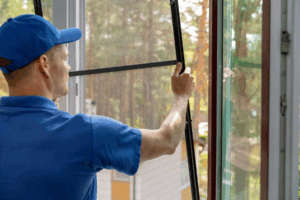Tree trimming is essential for maintaining the health and appearance of your trees. It’s not just about aesthetics; it’s also crucial for safety and growth. Proper trimming techniques ensure your trees thrive while minimizing risks.
Why Tree Trimming Matters
Trees can quickly become overgrown if not regularly maintained. Branches may grow unevenly, increasing the risk of breakage during storms. Dead or diseased limbs can also pose hazards to property and people. Trimming reduces these risks, helping trees grow stronger and healthier.
Regular tree trimming also improves airflow and sunlight exposure. These factors are vital for photosynthesis, allowing your trees to absorb nutrients efficiently. Additionally, a well-maintained tree enhances curb appeal, boosting your property’s value.
When to Trim Your Trees
Knowing the right time to trim trees can make a difference in their health. Generally, late winter or early spring is ideal. During these seasons, trees are dormant, minimizing stress from cutting. Avoid trimming during peak growth, as it may stunt development.
For flowering trees, wait until they finish blooming. Trimming too soon may reduce the number of flowers in the following season. Always use clean, sharp tools to make smooth cuts that heal faster.
Techniques for Effective Tree Trimming
Different tree species require different trimming techniques. Here are some basic approaches:
- Crown Thinning: Reduces the density of foliage, improving light and air penetration.
- Crown Raising: Removes lower branches to clear walkways and driveways.
- Crown Reduction: Reduces the height or spread of the tree, maintaining structure and safety.
- Deadwood Removal: Gets rid of dead, diseased, or broken branches to prevent decay.
Always start by removing dead or damaged branches. Next, focus on branches that cross or rub against each other. This friction can cause wounds, inviting pests and diseases.
Safety First: Tips for Trimming Trees
Safety should always come first when trimming trees. Wear protective gear, including gloves, goggles, and helmets. Use ladders with caution, and never trim near power lines without professional help.
If a branch is large or positioned awkwardly, seek assistance. DIY trimming can be risky if you lack experience. Sometimes, it’s best to hire certified arborists for complex jobs.
Tree Trimming Tools You Need
Having the right tools ensures efficient and safe trimming. Essential tools include:
- Hand Pruners: Ideal for small branches.
- Loppers: Useful for medium-sized limbs.
- Pruning Saws: Best for thicker branches.
- Pole Pruners: Great for reaching higher limbs without a ladder.
- Chainsaws: Only for large branches, used with caution.
Always disinfect your tools after trimming diseased branches to prevent spreading infections to healthy parts.
Common Mistakes to Avoid
Tree trimming mistakes can cause long-term damage. Here are some errors to avoid:
- Over-trimming: Removing too much foliage weakens the tree.
- Improper Cuts: Cutting too close to the trunk can harm the tree.
- Topping: Reducing the top of the tree drastically, leading to weak regrowth.
- Neglecting Safety: Skipping safety gear can lead to serious injuries.
Learning proper techniques takes time, but it’s essential to preserve your trees’ health.
Professional Tree Trimming: Is It Worth It?
Hiring professionals ensures the job is done correctly and safely. Certified arborists understand how to trim trees without harming their structure. They use specialized equipment, reducing risks to both trees and property.
If you have large trees or complicated trimming needs, consider professional services. The investment often pays off in healthier, longer-living trees.
Environmental Benefits of Tree Trimming
Regular trimming benefits not only your property but also the environment. Healthier trees produce more oxygen, improving air quality. They also absorb more carbon dioxide, helping combat climate change.
By trimming trees properly, you encourage more robust growth, contributing to a greener, healthier community.
Final Thoughts: Keep Your Trees Healthy
Tree trimming is an essential part of landscape Tree Maintenance. By following safe practices and trimming at the right time, you can enhance both the health and appearance of your trees. Whether you do it yourself or hire professionals, proper trimming keeps your outdoor space beautiful and safe.
Need help keeping your trees in top shape? Reach out today for professional tree trimming services. Keep your landscape safe, beautiful, and thriving!






